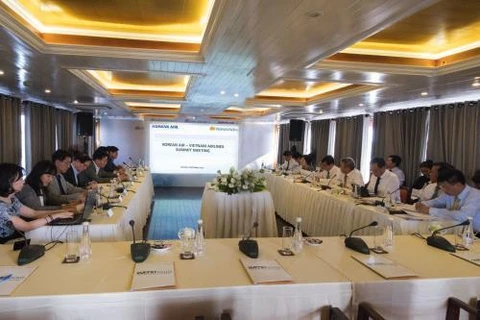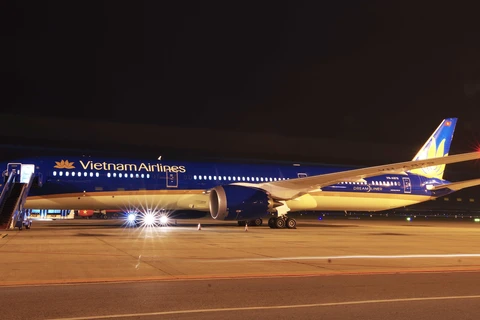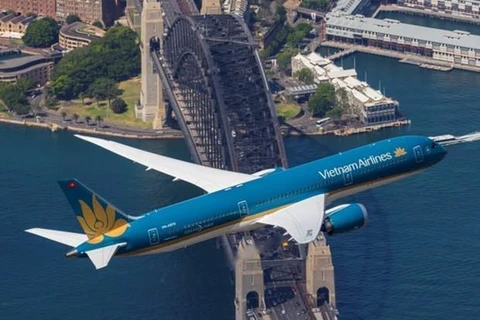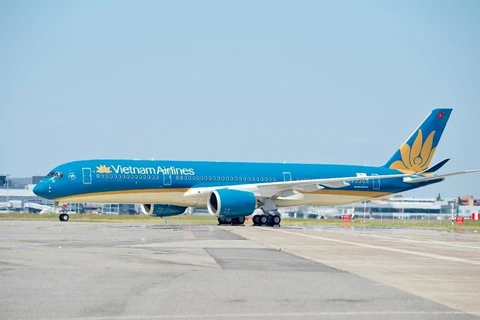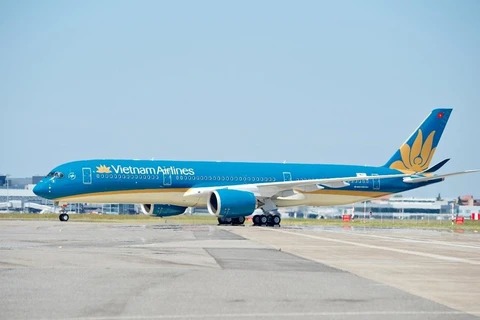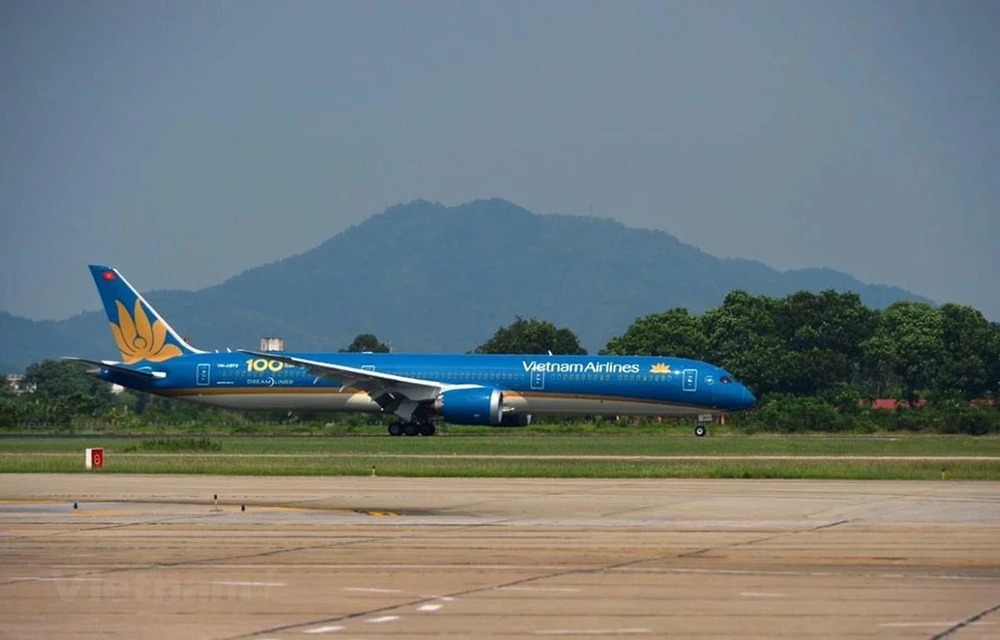
Hanoi (VNA) – Vietnam Airlines’ reception of the 100th aircraft of its fleet is an important milestone, affirming the leading position of the firm with the biggest fleet in Vietnam that is comparable to other carriers’ in the region.
The national flag carrier welcomed its 100th aircraft, a Boeing 787-10, at Noi Bai International Airport of Hanoi on October 22.
The plane is the third among the eight Boeing 787-10s Vietnam Airlines has been receiving from August 2019 to March 2021.
This is the biggest aircraft type in Vietnam at present. Within two months, the first two Boeing 787-10s of the carrier conducted nearly 140 flights with more than 83,000 passengers on routes linking Hanoi with Ho Chi Minh City and Vietnam with the Republic of Korea.
At the reception ceremony, Deputy Prime Minister Truong Hoa Binh said the joining of the 100th aircraft in the fleet heralds a new development stage of Vietnam Airlines in the journey to bring the country’s aviation industry on par with the sector in the region and the world.
Not any carriers can improve their fleet as fast and effectively as Vietnam Airlines has done. The firm’s solid, strategic and long-term steps in its fleet expansion plan, i.e. by equipping itself with the latest, most modern and environmentally friendly planes, demonstrate its active mindset and vision, he stressed.
In its medium- and long-term plans, Vietnam Airlines will continue to increase the number of aircrafts and expand its network to more destinations. However, he noted, the aircraft number is just one of the elements of a carrier’s strength. Service quality, technical infrastructure, and the capacity of personnel in all steps are also key to its development, sustainability and success.
[Photos: Vietnam Airlines welcomes 100th aircraft]
Vietnam’s aviation industry is entering a period of strong development with the establishment of new carriers. The industry aims to serve 17 million – 20 million foreigners and 82 million domestic passengers in 2020 and more in the following years with increasingly improved service quality. In this process, Vietnam Airlines plays a crucial role as the national flag carrier, according to the Deputy Prime Minister.
 Deputy Prime Minister Truong Hoa Binh said as the national flag carrier, Vietnam Airlines plays a crucial role in the development of the country’s aviation industry (Photo: VietnamPlus)
Deputy Prime Minister Truong Hoa Binh said as the national flag carrier, Vietnam Airlines plays a crucial role in the development of the country’s aviation industry (Photo: VietnamPlus) According to Chairman of the Board of Directors of Vietnam Airlines Pham Ngoc Minh, the reception of the 100th plane is an important milestone, affirming the leading position of the firm with the biggest fleet in Vietnam that is comparable to other carriers’ in the region.
He said his business has built and implemented a long-term development road map. It has also made clear plans and strategic visions suitable for each stage of growth in which expanding and upgrading the fleet is an important step.
Vietnam Airlines has received and put into use the most modern and newest aircraft of Boeing and Airbus, with its fleet’s average age of six years, which is young compared to those in the region and the world, so as to meet growing transportation demand, Minh noted.
The fleet of new-generation aircraft has helped Vietnam Airlines improve its operating capacity, flight safety and service quality so as to become a five-star international carrier in the near future, he added.
Vietnam Airlines currently owns the second largest fleet of Airbus A350 and Boeing 787 wide-body planes in Southeast Asia, with 14 Airbus A350-900s, 11 Boeing 787-9 Dreamliners, and three Boeing 787-10 Dreamliners.
While the firm’s wide-body airplanes mainly operate on long-haul domestic and international routes, the narrow-body ones consisting of 52 Airbus A321s, 14 Airbus A321neos, and six ATR-72s have proved effective on short-haul routes and those with lower travel demand or to airports with limited infrastructure./.
